The following is just a possible itinerary:
The Site of Ancient Pompeii sits in the Bay of Naples between Naples, Salerno, and Sorrento. Along the road, you can see and feel the towering presence of Mt Vesuvius. You will enjoy views of the Bay of Naples and its islands. Across the Bay stands Cape Misenum, where the Roman Military Navy was based. From this position, on 79 CE, Pliny the Younger described the famous eruption that buried Pompeii and the surrounding towns.
This is a suggested itinerary for our optional private guided walking tour of Pompeii, if you choose to explore the archaeological site with our professional guide.
In Pompeii, you will first admire the city walls, dating back to the pre-roman Pompeii (4 centuries BC). One of the best-preserved ancient gates is called Porta Marina, it connected Pompeii with its port, with one path for charts and another for people.
Right before this gate, there is a not-to-be-missed building, the Suburban Bath House recently excavated and therefore very well preserved.
Once in town, you will be walking on the original road made of basalt stone (volcanic rock), and you will notice on the ground hundreds of little white spots made of travertine used to reflect torchlight (nowadays “cat’s eye” on the driving roads).
Your attention will be captured by big blocks of basalt emerging from the road: they were stepping stones used by pedestrians to avoid getting wet when it rained; differently than other Roman towns, Pompeii didn’t have a complete sewer system because the city was built on top of a lava platform too hard to be worked.
The city center is called Forum. It hosts all the buildings with a public function: Religion (the Temple of Apollo, the Capitolium and the Temple of the Emperor), Trade (the meat and fish market called Macellum, the textiles market headed by a priestess named Eumachia), Administration (the Basilica) and Politics (Comitii). Other facilities in the Forum where exchange offices, public restrooms and a public scale (tabula mensurae) where to compare and weigh farmer’s products. In the Forum, you will also see a display of the famous human casts.
Close to the Forum were public Bath-Houses where both men and women (in different sections), poor and wealthy, free persons and slaves could access daily hygiene. Pompeii had three such complexes in town plus two more right outside town, and they all had the following facilities: a changing room (apodyterium), a tepid room (tepidarium), a hot room (calidarium) and a Gym (Palestra).
You will notice several places fronting the road with large vases built in a masonry counter: this is what the Romans called popinae, today’s taverns! These jars were full of food and beverages, and many ancient Pompeians would stop in such places for lunch.
You will recognize some of the Bakeries of Pompeii, with their ovens and grinding machines: incredible but true, some round carbonized loaves of bread were found during the excavations. These are on exhibit at the Archaeological Museum of Naples, together with more carbonized organics such as almonds, pine cones, figs, dates, etc.
On request, we can visit the Brothel (Lupanare). It features several erotic images painted with the frescoes technique! If the Brothel is too busy, we can still see some of these specific frescoes by the Suburban Bath-House.
Do not miss the chance to discover Pompeii’s places for public performances: an outdoor Theatre (for comedy and tragedy), an indoor theatre (Odeion, for mimes and declamation of poetry) and a big Amphitheater (for games like gladiators or beast fights). You shall visit at least one of those places.
Pompeii is too big to be visited entirely in one day. Leisure Italy will make sure you see the highlights. Our optional guided tour aims to visit an example for each typology of building.
After the tour at Pompeii you could stop for a few minutes for a fresh-squeezed orange juice or to browse the souvenir shops if you wish.
During your Private Tour of the Amalfi Coast, you will cross several charming villages: Sorrento, Positano, Amalfi, Ravello, etc.
The time you can spend in each of them depends on your choice and on your ship’s last boarding time. Leisure Italy recommends choosing one or a maximum of two towns, to have some time at leisure to enjoy instead of being rushed all day. Please consider that driving time from the Amalfi coast back to Naples is nearly 2 hours.
After you explore the archaeological site, your Private Tour of Pompeii and the Amalfi Coast will take you to the Sorrento Peninsula, with some beautiful landscapes on your right-hand side. Along the way, your private driver will stop so you can take stunning pictures of the panorama.
Once on the Amalfi Drive, you will experience the pure Mediterranean beauty: cliffs, blue sea, Mediterranean flora, light blue sky. Some luxurious villas perched like eagles’ nests atop the surrounding mountains. What about the incredibly narrow winding road stretching along the coast? One is surrounded by breathtaking scenery.
Sorrento is our choice for shopping and lunch opportunities. It is famous for its “limoncello” production – an alcoholic lemon liquor that you can taste mostly anywhere in town. Not to miss is the overview of the Bay of Naples from the Garden of St-Francis.
Positano is the first village you will cross along the Amalfi Coast. Its whitewashed houses and its fancy art and ceramic galleries attract thousands of travelers, turning it into a very touristy destination. If you like, you can leave the vehicle and discover the village. It is mostly a pedestrian area leading down to the beach.
Amalfi is the most interesting place on the Amalfi coast for its glorious historical past. You can visit the Cathedral – the burial place of St. Andrew – or you can try to get away from the crowds exploring the maze of little white-painted alleys and travel through time back to the Middle Ages!
Finally, you can visit Ravello (350 meters above sea level), certainly the most elegant and scenic village on the coast. In Ravello, you can visit either Villa Cimbrone or Villa Rufolo with their astonishing views. Or simply enjoy some free time.
Lunch will depend on your desire: there will be different options, from a snack up to a nice seafood meal in one of the many excellent restaurants with a sea view along the itinerary.
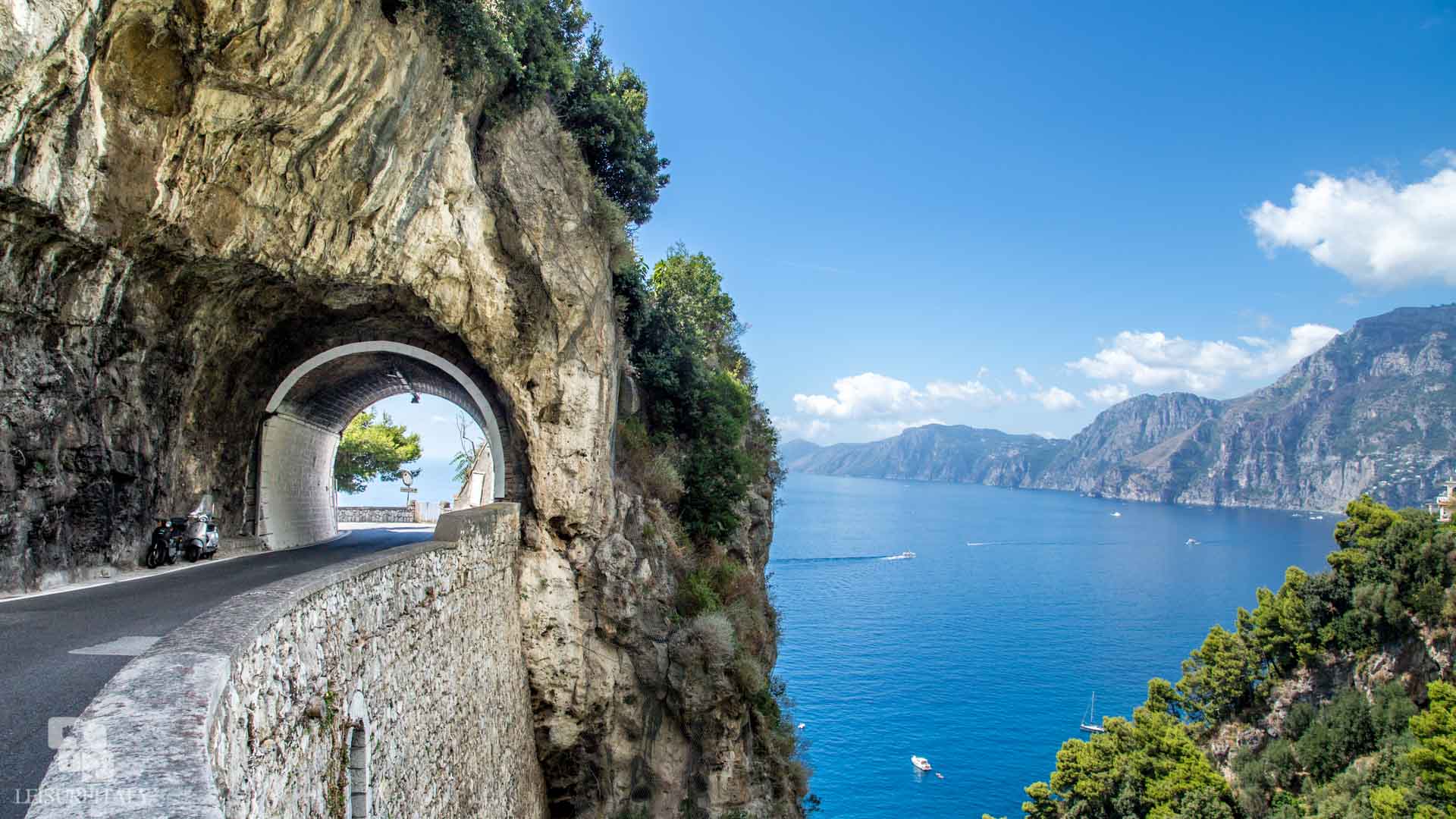
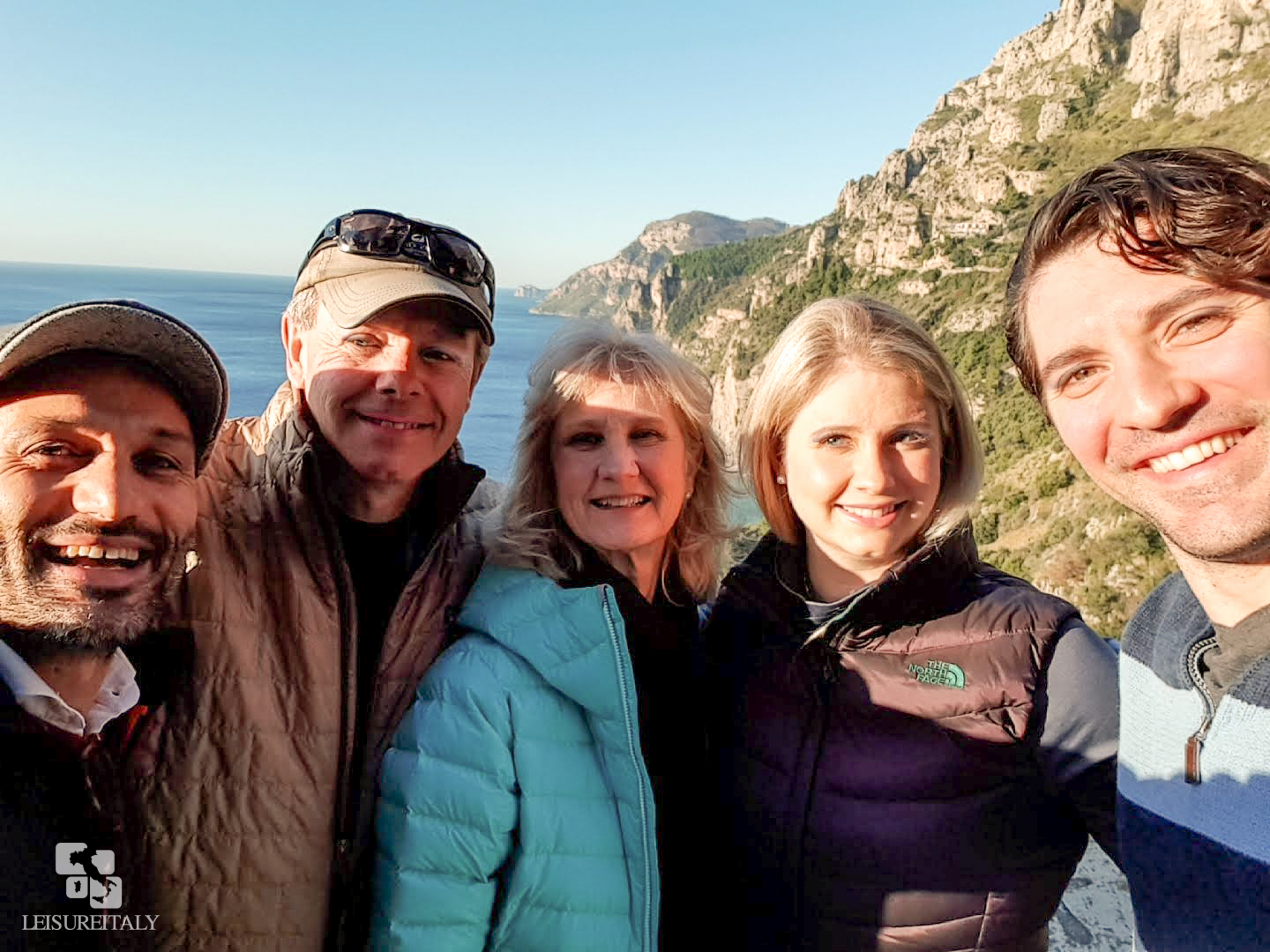
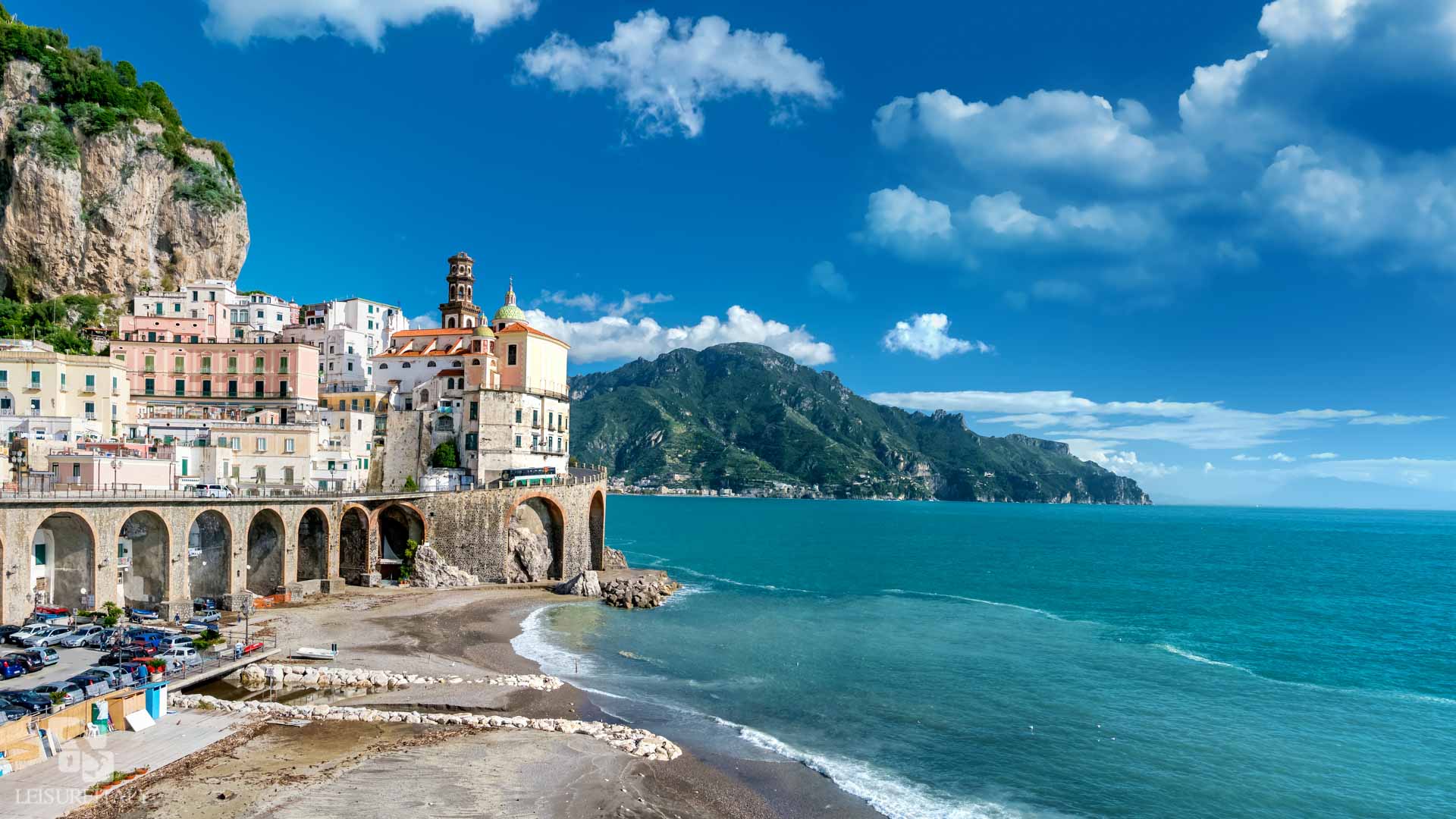
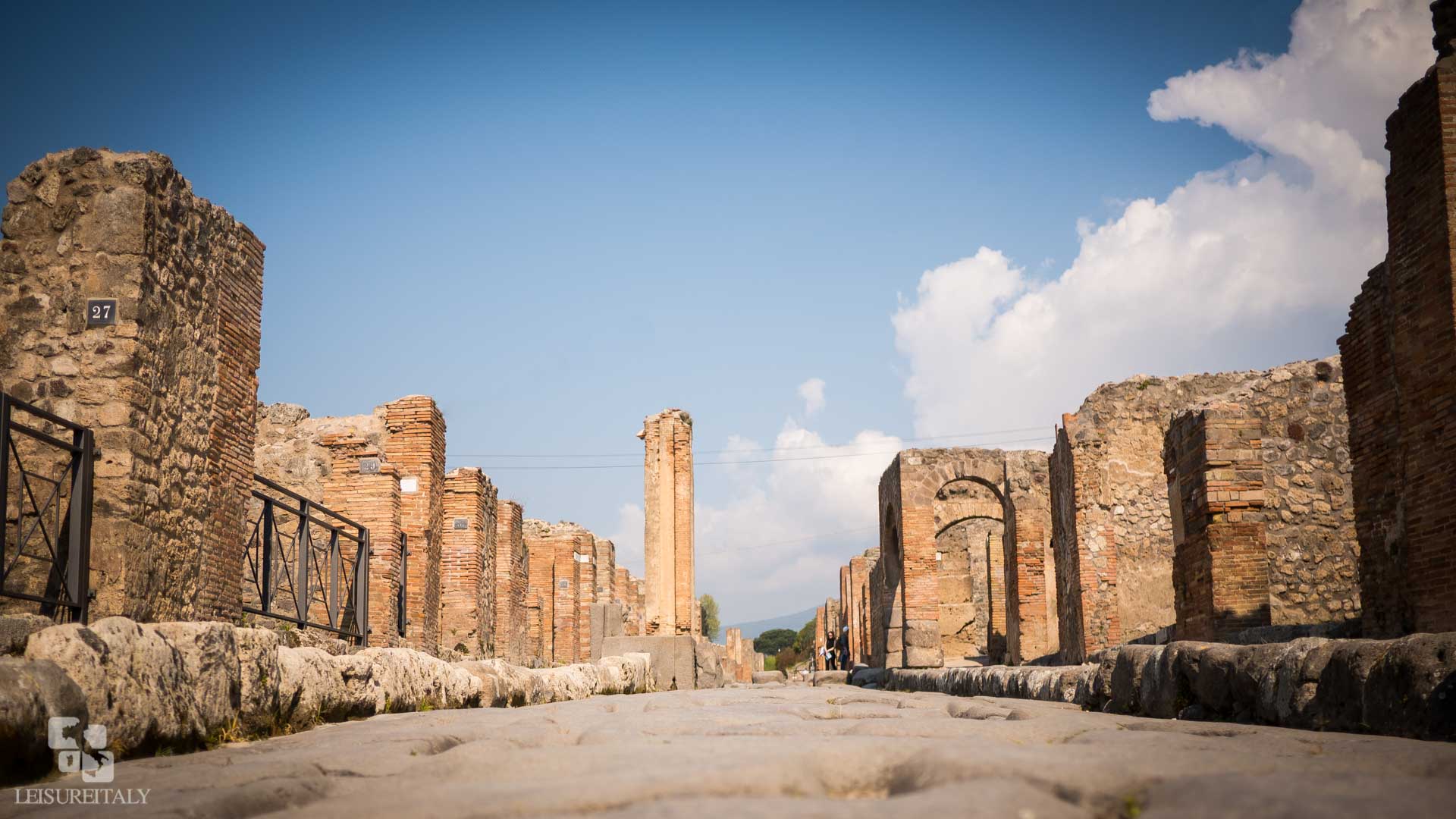
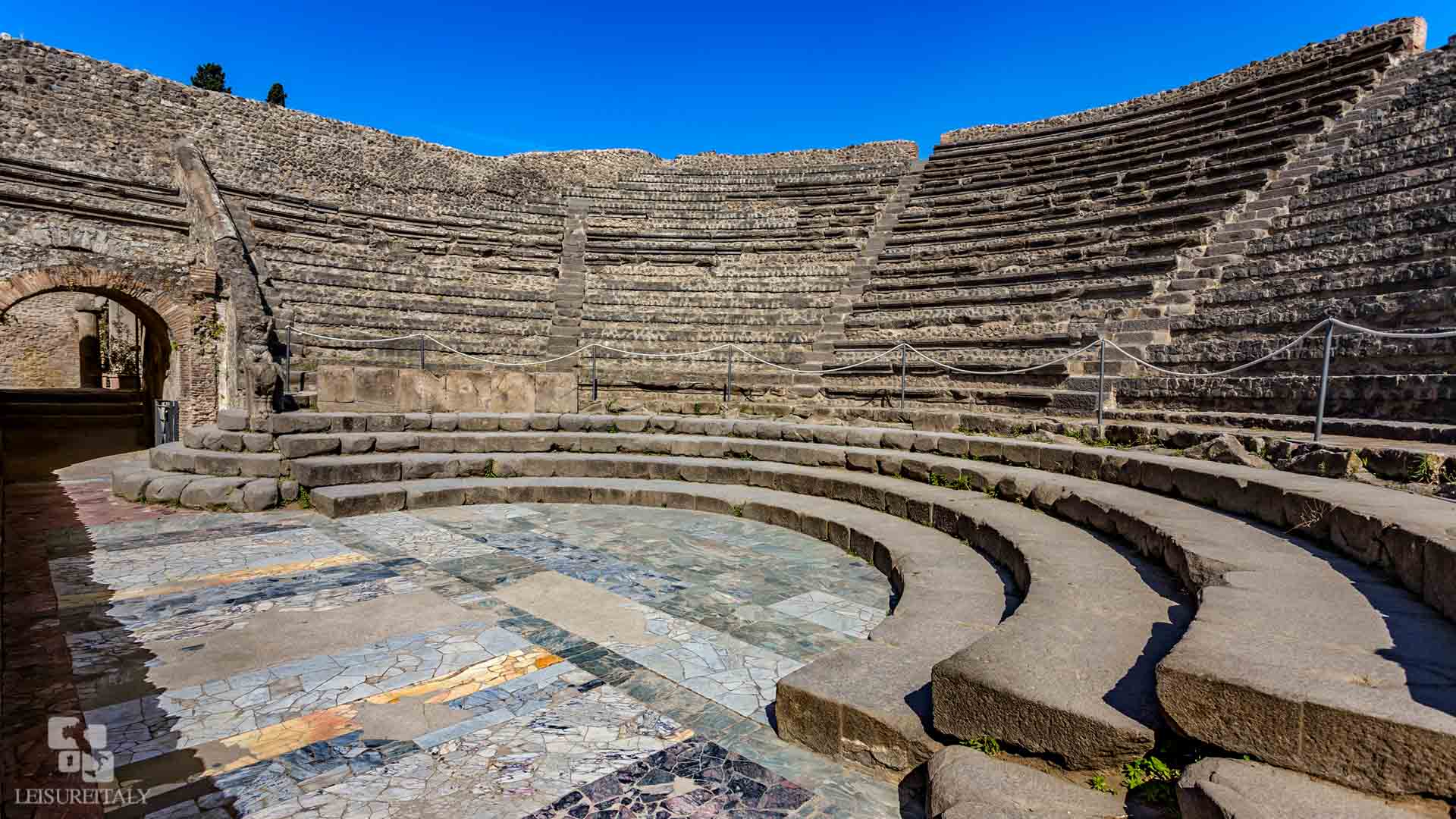
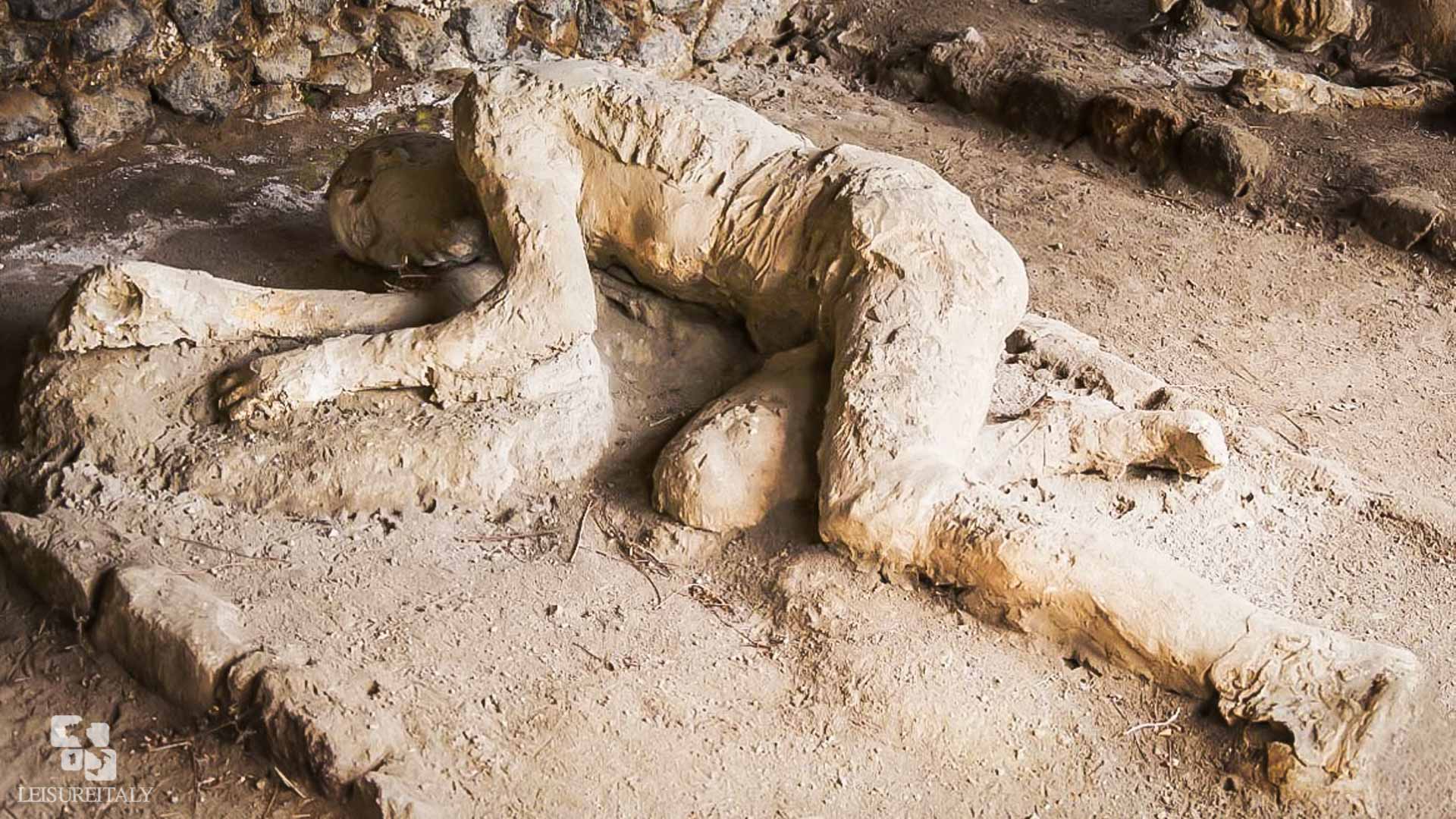
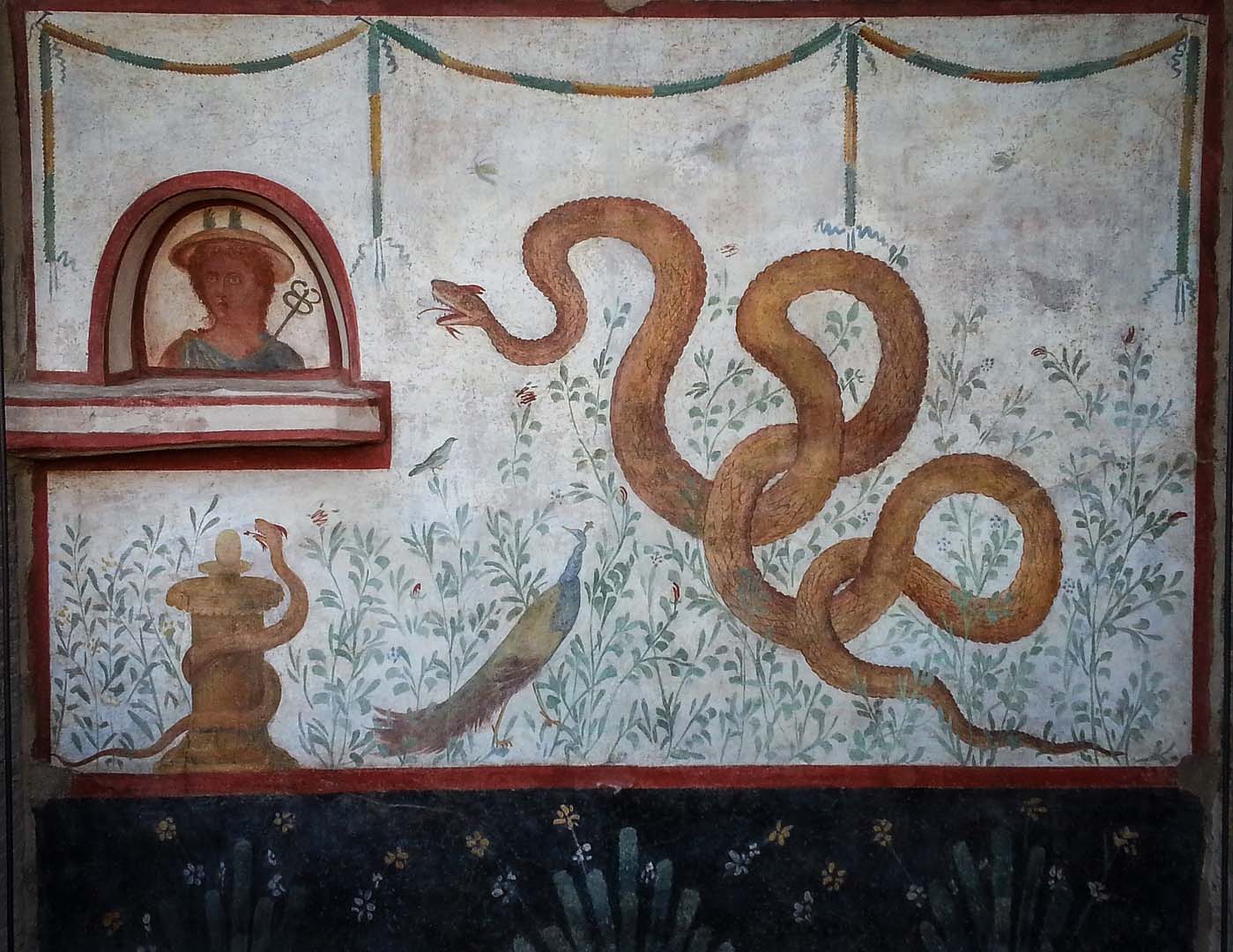
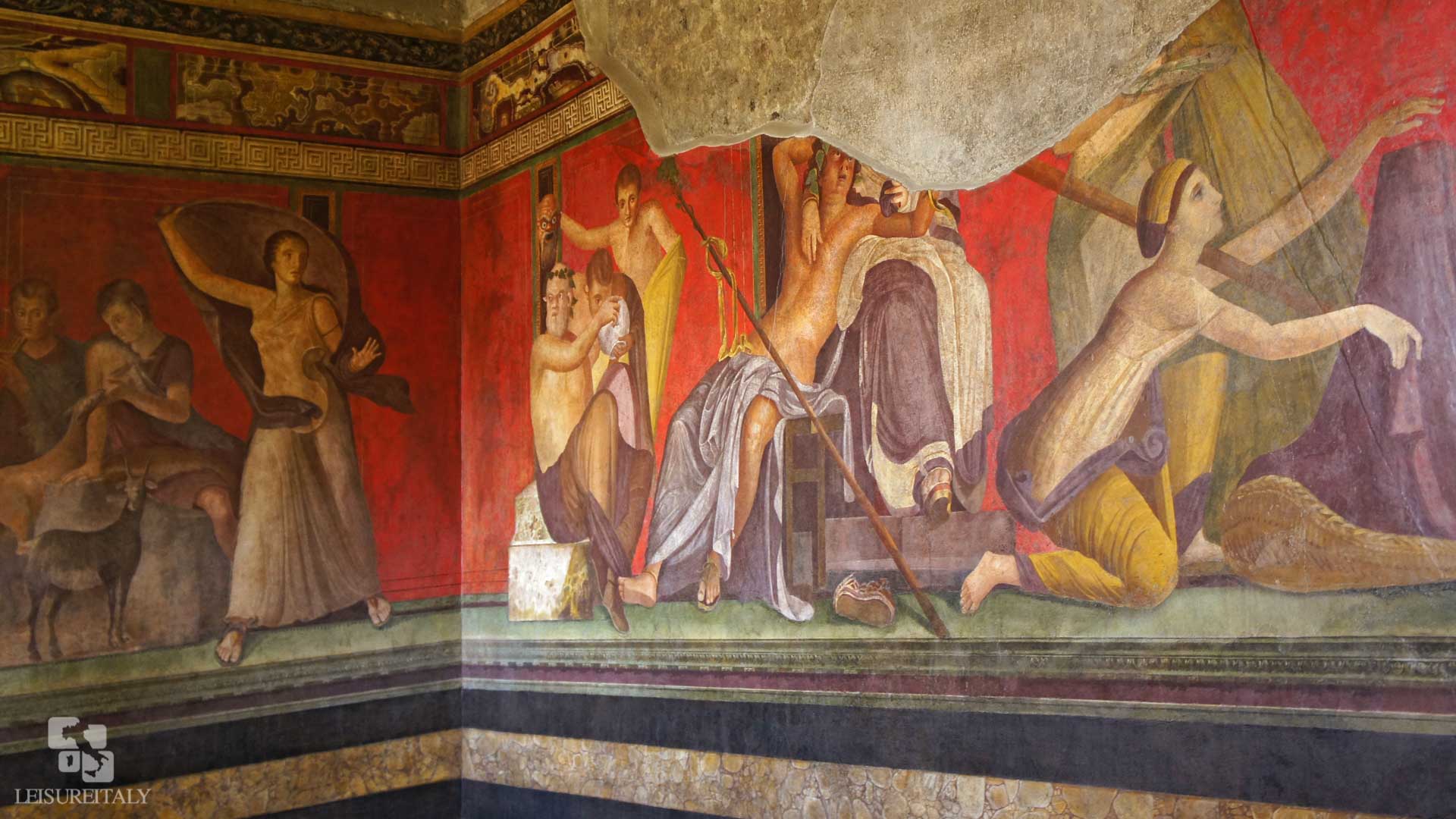
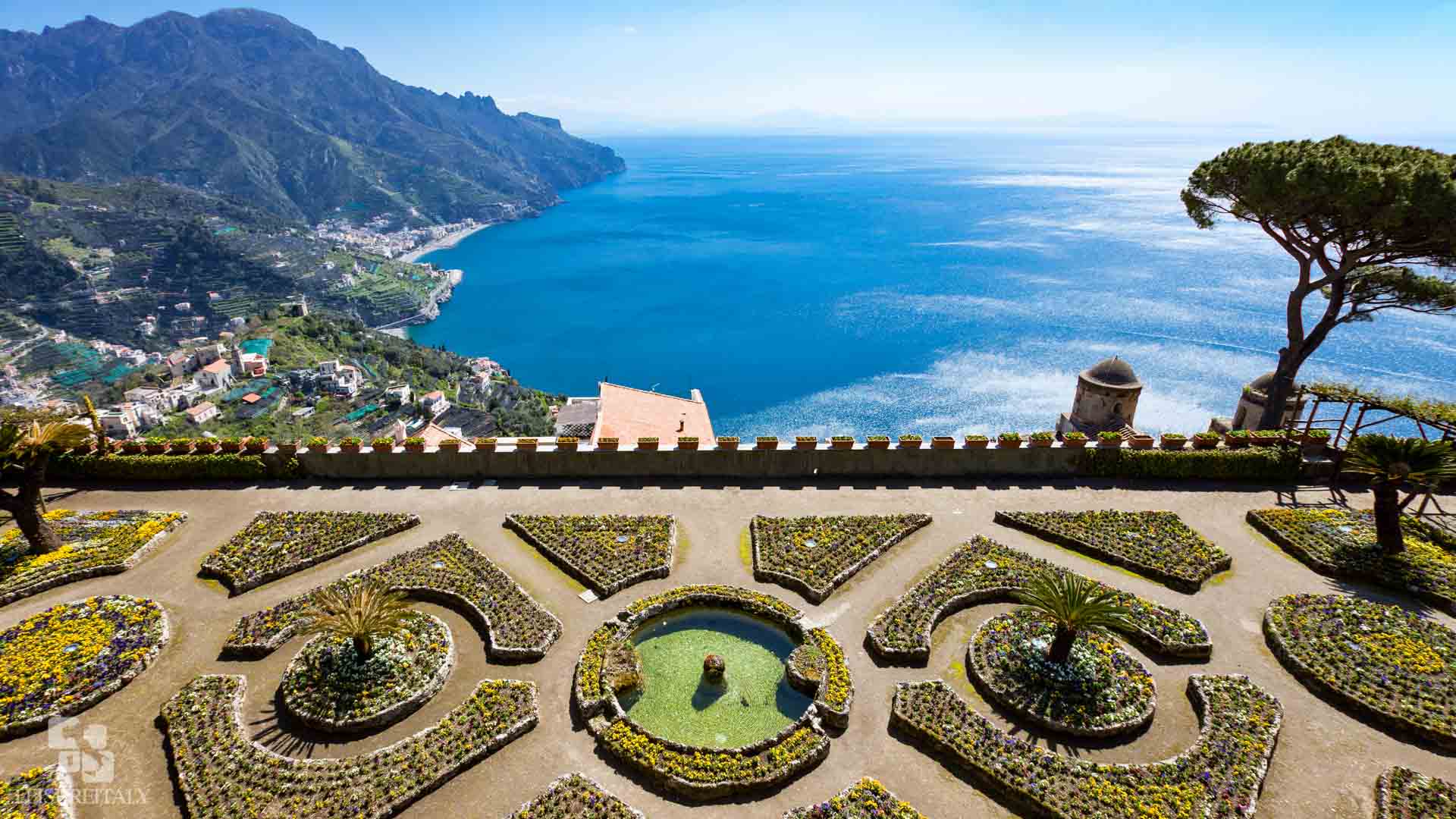
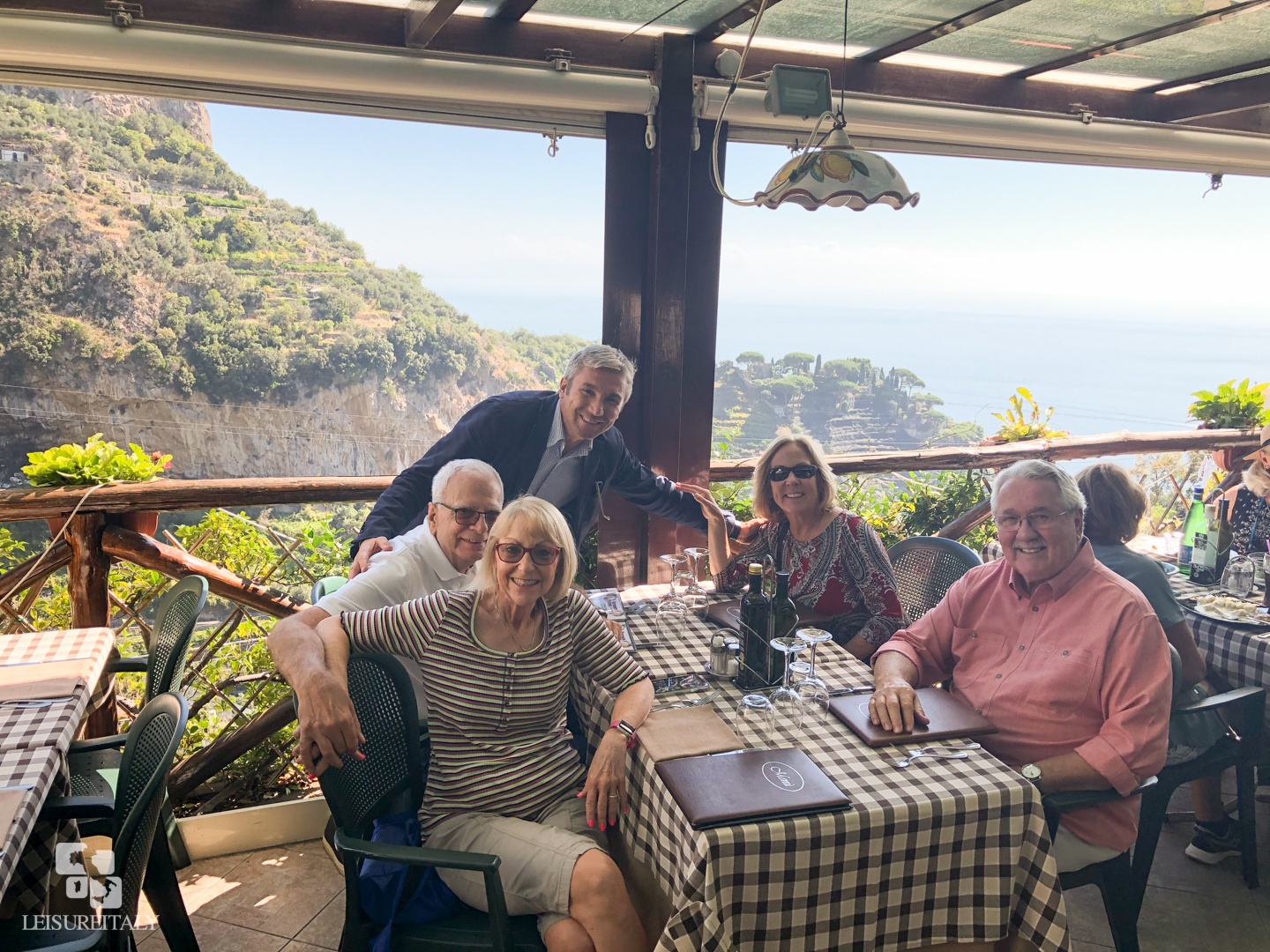
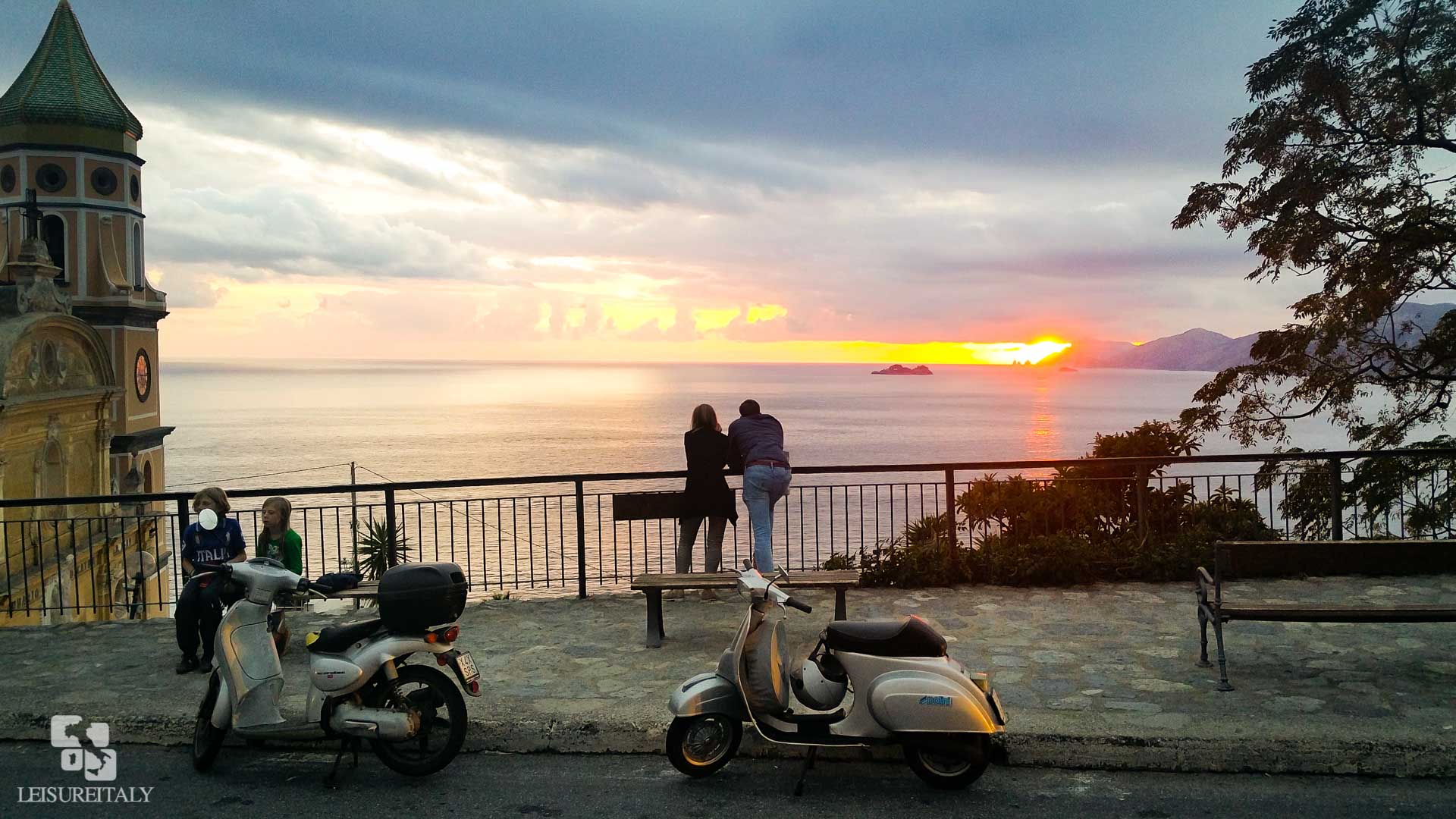
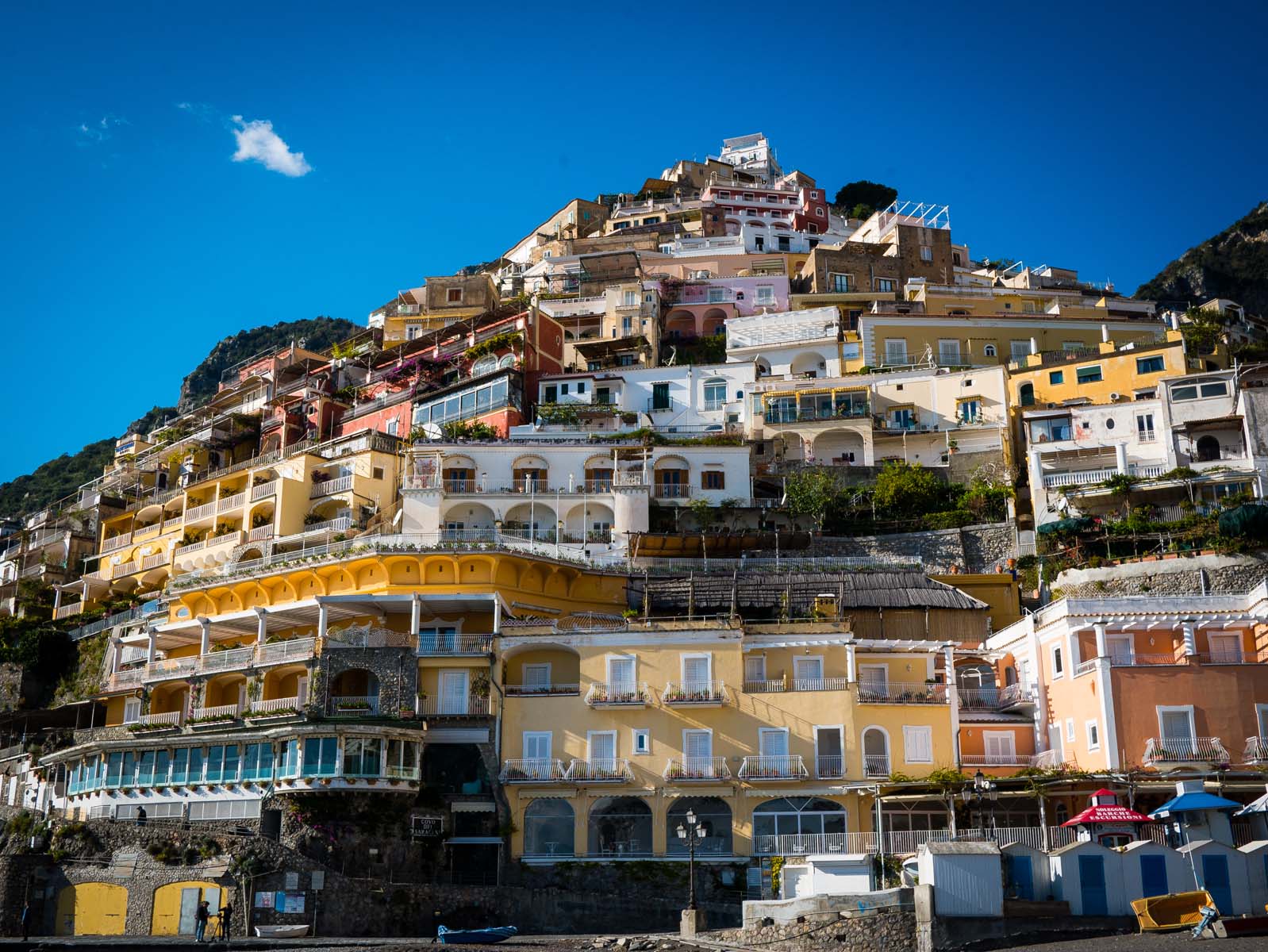
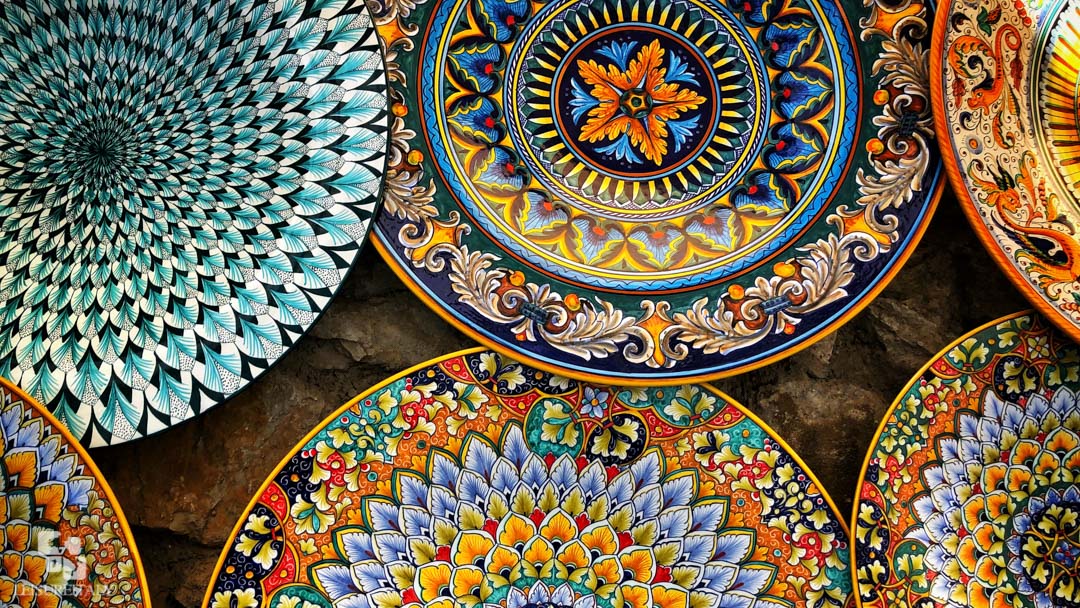
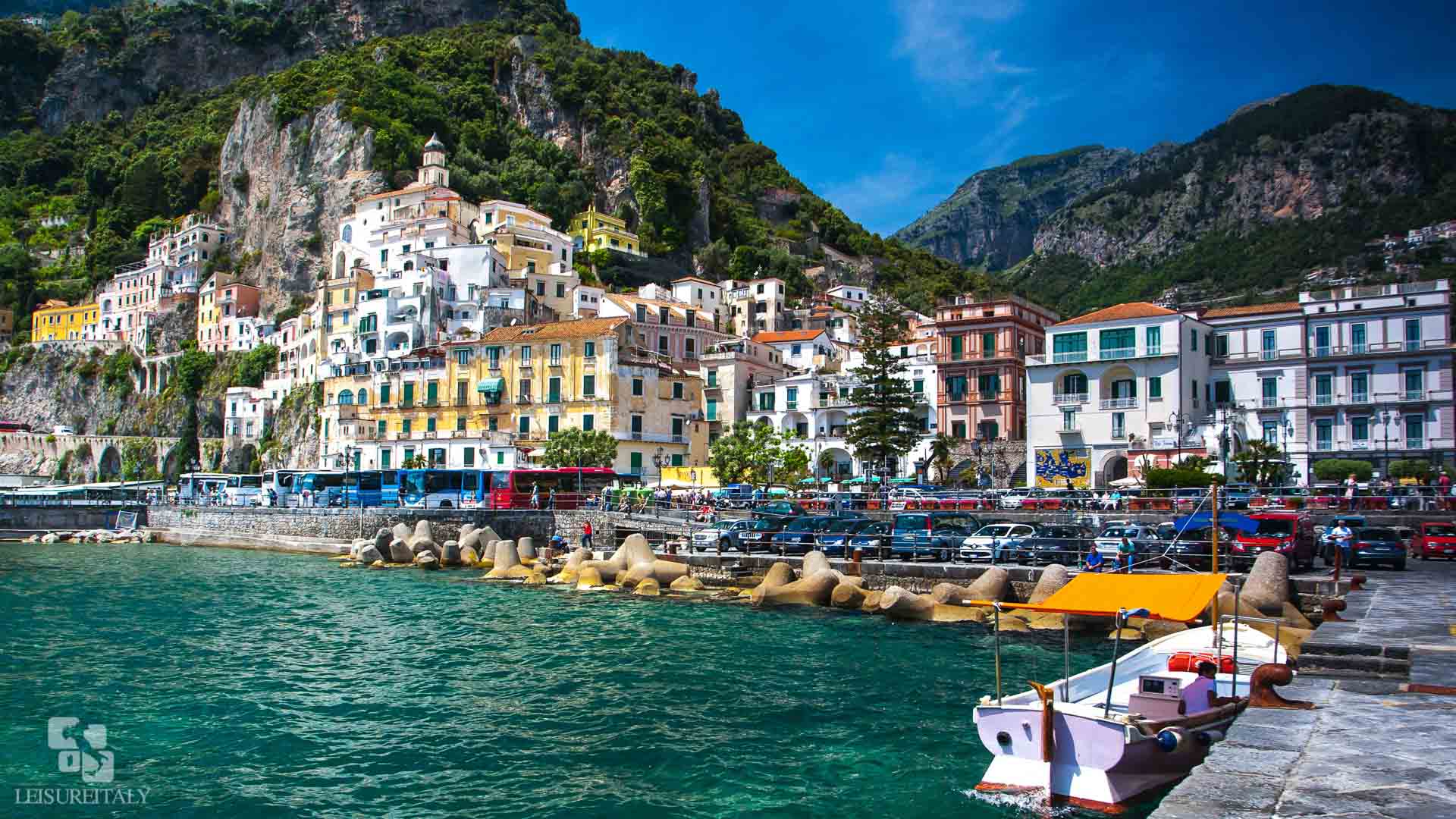
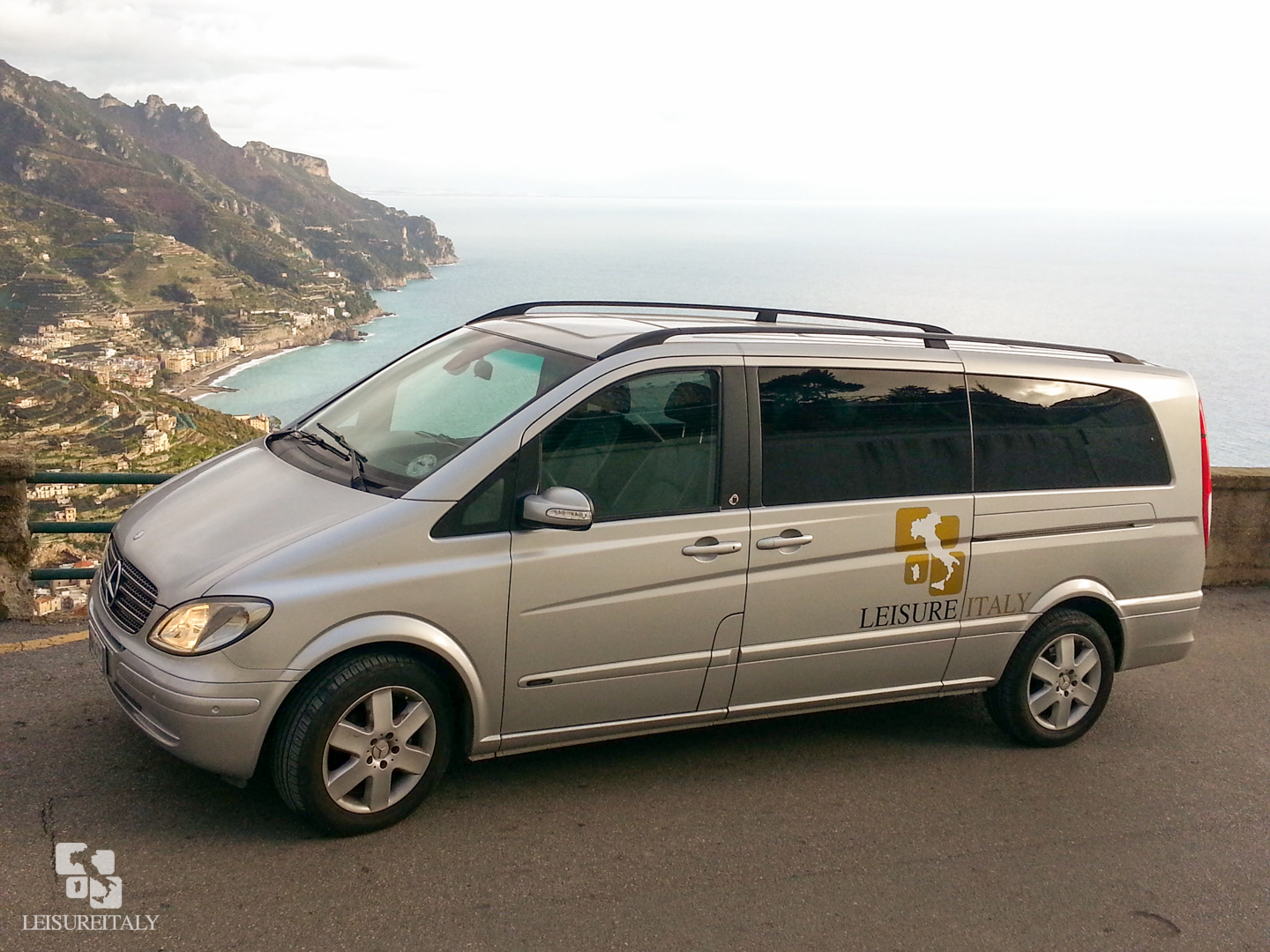
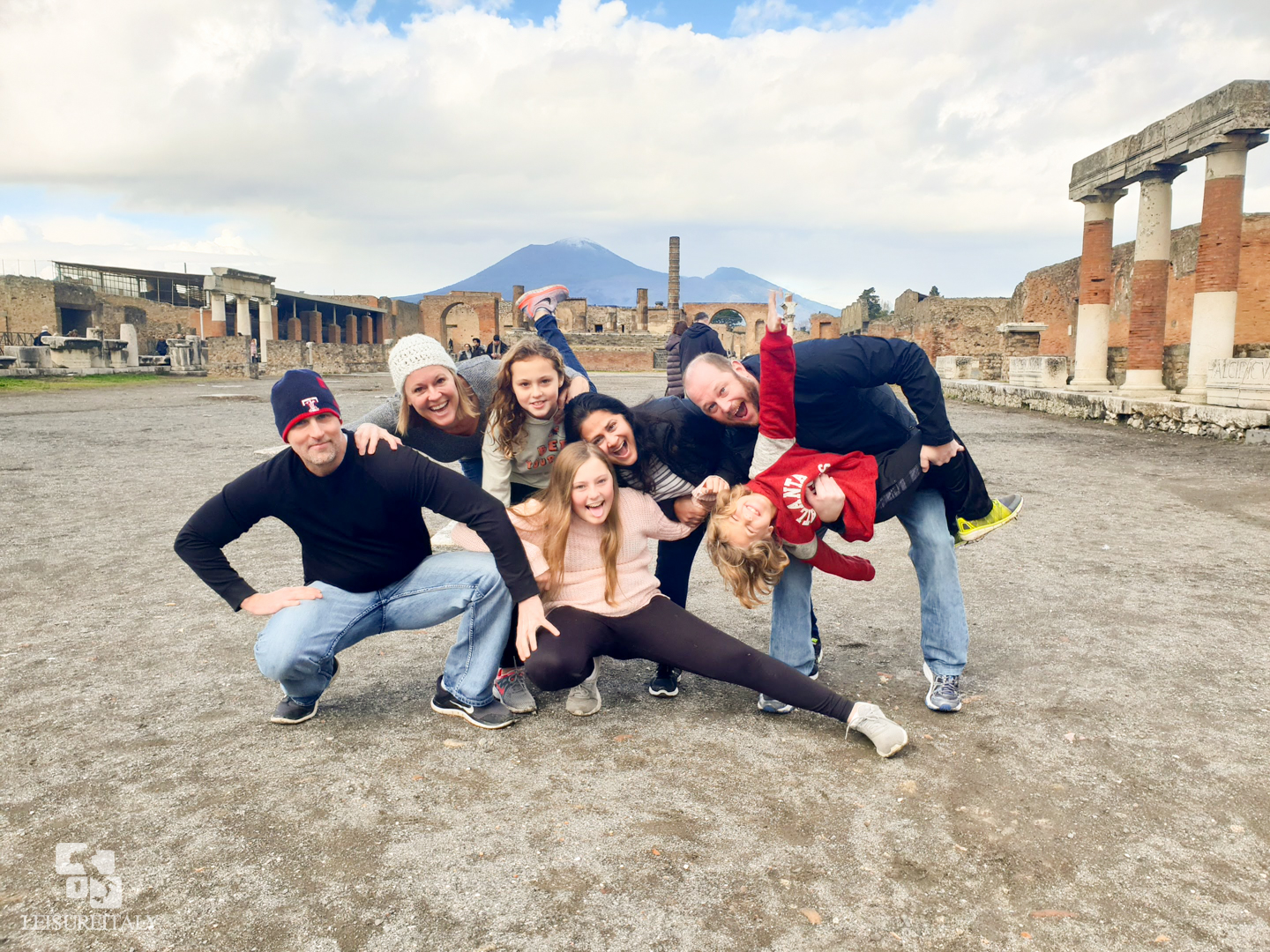
Tour Reviews
We currently live in Napoli and had friends visiting. This was by far the best tour of Pompeii and the Amalfi Coast we have experienced. It is the people, the guides who make all the difference. Giuseppe’s passion for sharing the stories, the histories was palpable. It was also so wonderful to be picked up from our location in Napoli to start our tour. We hope to experience more tours from Leisure Italy while living abroad and look forward to sharing this opportunity with family and friends.
Absolutely the best way to spend a long day exploring the Amalfi Coast! Our driver, Pasquale, was extremely professional and listened to our interests before suggesting additional stops after our scheduled tour at Pompeii. He arranged for a winery tour/ tasting and lunch for us which was perfect! I highly recommend for a great experience on the coast!